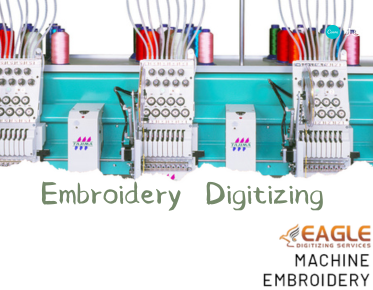Vector Image Conversion for Screen Printing vs Embroidery
In the world of textile design, vector image conversion plays a crucial role in ensuring high-quality outcomes for both screen printing and embroidery. Each method has its unique requirements and processes, making it essential to understand the differences and applications of vector image conversion for each. For instance, embroidery digitizing requires a specific approach to convert images into stitch-ready formats.
Understanding Vector Image Conversion
Vector images are composed of paths defined by mathematical expressions, which makes them scalable without losing quality. This is particularly important in textile applications where designs need to be resized to fit different garment sizes. The conversion of raster images (composed of pixels) to vector format is a critical step in preparing designs for both screen printing and embroidery.
Screen Printing and Vector Images
Screen printing is a popular method for applying designs to textiles, especially for large batches. The process involves creating a stencil (or screen) for each color in the design. Vector images are ideal for screen printing because they allow for precise color separations and clean lines, which are essential for creating high-quality prints. The conversion process involves simplifying the image to ensure it can be effectively translated into a stencil.
Embroidery and Vector Images
Embroidery, on the other hand, involves stitching designs onto fabric using threads. The conversion of vector images for embroidery is more complex than for screen printing. It requires the image to be digitized into a format that embroidery machines can read, such as a PES or DST file. This process, known as machine embroidery digitizing, involves defining stitch types, directions, and densities.
Key Differences in Conversion Techniques
While both screen printing and embroidery benefit from vector images, the conversion techniques differ significantly. For screen printing, the focus is on color separations and maintaining sharp edges. In contrast, embroidery digitizing requires attention to stitch patterns and fabric interactions. The choice of technique depends on the desired outcome and the material being used.
Choosing the Right Method
When deciding between screen printing and embroidery, consider the design complexity, fabric type, and intended use of the final product. Screen printing is often preferred for its cost-effectiveness in large runs and its ability to reproduce vibrant colors. Embroidery, however, offers a more textured and durable finish, making it ideal for logos and monograms on corporate apparel.
Future Trends in Vector Image Conversion
As technology advances, the tools and software for vector image conversion continue to evolve. Innovations in AI and machine learning are making it easier to automate the conversion process, improving accuracy and efficiency. These advancements are likely to enhance both screen printing and embroidery, offering designers more flexibility and creativity in their work.
For those looking to explore professional embroidery digitizing services, Eagle Digitizing excels in providing these services, ensuring every design is crafted with unmatched precision. Whether you're converting images for screen printing or embroidery, understanding the nuances of each process will help you achieve the best results.



.png)